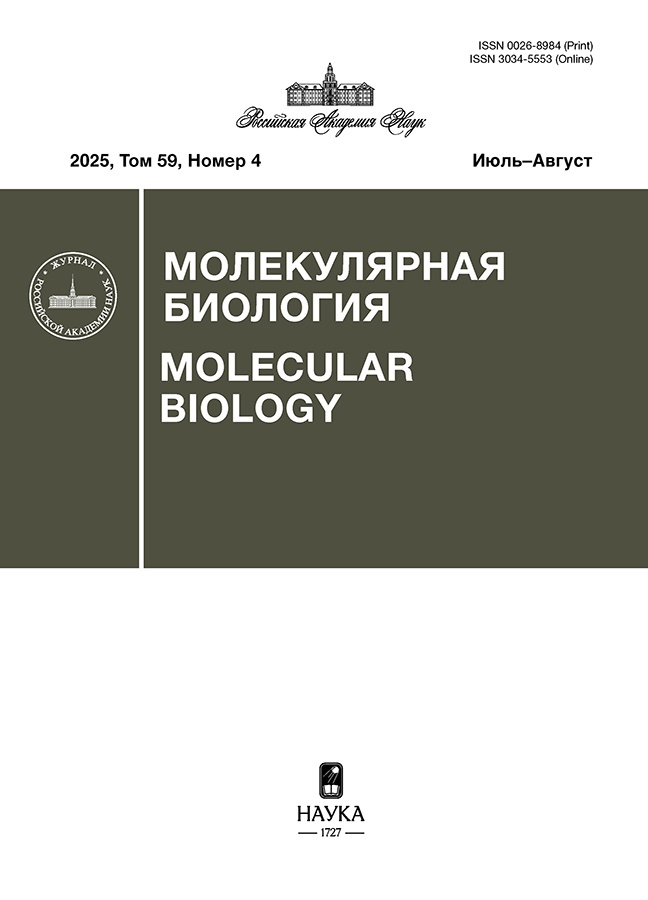Molekulârnaâ biologiâ
ISSN (print): 0026-8984
Media registration certificate: No. 0110239 dated 02/08/1993
Founder: Russian Academy of Sciences
Editor-in-Chief Makarov Alexander Alexandrovich
Number of issues per year: 6
Indexation: RISC, list of Higher Attestation Commissions, CrossRef, White List (level 3), Scopus
"Molekulârnaâ biologiâ" covers a wide scope of problems related to molecular, cell and computational biology including genomics, proteomics, bioinformatics, molecular virology and immunology, molecular development biology, and molecular evolution. Molecular Biology publishes reviews, mini-reviews, experimental and theoretical works, short communications. Annualy, the journal publishes special issues devoted to most rapidly developing branches of physical-chemical biology and to the most outstanding scientists on the occasion of their anniversary birthdays. The authors of the journal are from Russia and other countries of the World.
"Molekulârnaâ biologiâ" is indexed/abstracted in Science Citation Index Expanded (SciSearch), Journal Citation Reports/Science Edition, SCOPUS, Chemical Abstracts Service (CAS), Google Scholar, EBSCO Discovery Service, CSA, CAB International, Academic OneFile, Academic Search, AGRICOLA, Biological Abstracts, Biological and Agricultural Index, BIOSIS, CAB Abstracts, CSA Environmental Sciences, EMBiology, Expanded Academic, Global Health, Health Reference Center Academic, Highbeam, INIS Atomindex, OCLC, OmniFile, Science Select, SCImago, Summon by ProQuest, Zoological Record, Microbiology Abstracts Section B: Health & Safety Science Abstracts, Virology and AIDS Abstracts.
Ағымдағы шығарылым
Том 59, № 4 (2025)
ОБЗОРЫ
Enveloped virus entry as a pharmacological target: viral membrane fusion machineries and their inhibitors
Аннотация
 517-543
517-543


Error correction techniques in synthetic oligonucleotides and synthetic dna
Аннотация
 544-556
544-556


ГЕНОМИКА. ТРАНСКРИПТОМИКА
Influence of various factors on the transcription activity of Crassostrea gigas pogo transposons
Аннотация
 557-571
557-571


Transcriptomic profile of trastuzumab-resistant breast cancer cell line BT-474
Аннотация
 572-586
572-586


МОЛЕКУЛЯРНАЯ БИОЛОГИЯ КЛЕТКИ
The ccc proline codon preceding a stop codon modulates translation termination in eukaryotes depending on the molecular context
Аннотация
 587-598
587-598


Assembly of a Complex of Immature 30S Ribosomal Subunit and Era GTPase Maturation Factor from Staphylococcus aureus in vitro for Structural Studies
Аннотация
 599-606
599-606


In Vitro Reconstitution of the S. aureus 50S Ribosomal Subunit and GTP-Binding Factor YSXC Complex for Structural Studies
Аннотация
 607-615
607-615


DNA Double-Strand Break Repair System by a Mechanism of Non-Homologous End Joining Provides Resistance to DNA-Damaging and Oxidizing Stresses in the Yeast Debaryomyces hansenii
Аннотация
 616-628
616-628


Regulation of complement C3 gene in the human hepatoma cells HepG2 under oxidative stress
Аннотация
 629-645
629-645


Cg10543 protein is involved in the regulation of transcription of ecdysone-dependent genes
Аннотация
 646-654
646-654


Optimization of Production of Recombinant Adeno-Associated Virus Serotype 9
Аннотация
 655-662
655-662


СТРУКТУРНО-ФУНКЦИОНАЛЬНЫЙ АНАЛИЗ БИОПОЛИМЕРОВИ ИХ КОМПЛЕКСОВ
Label-free optical biosensor for analysis of binding kinetics of smart nanomaterials with ligands
Аннотация
 663-676
663-676











